Eleven births per thousand population
In 2022, a total of 172,216 live births were registered in the National Capital Region (NCR) by place of occurrence. The number of registered live births to mothers with a usual place of residence in NCR reached 160,132, equivalent to a crude birth rate (CBR) of 11.3 or around 11 births per thousand population.1
The number of registered births from 2013 to 2022 generally decreased. A decrease of 34.3 percent in the registered live births was noted in the past ten years, from 243,626 in 2013 to 160,132 in 2022. The highest rate of decline was noted in 2021 with 19.1 percent. (Figure 1 and Table 1)
On average, 439 babies were born daily, which translates to 18 babies per hour, based on the number of registered live births to mothers with a usual residence in NCR. (Table 1)
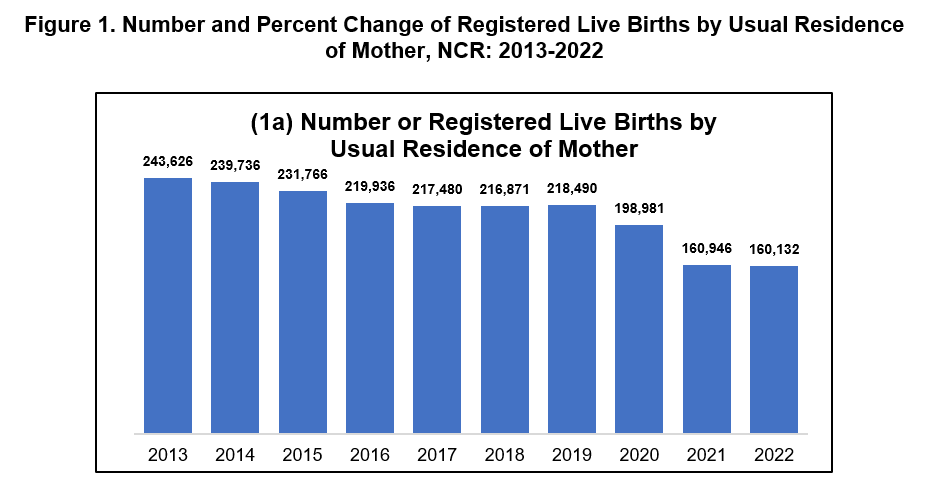
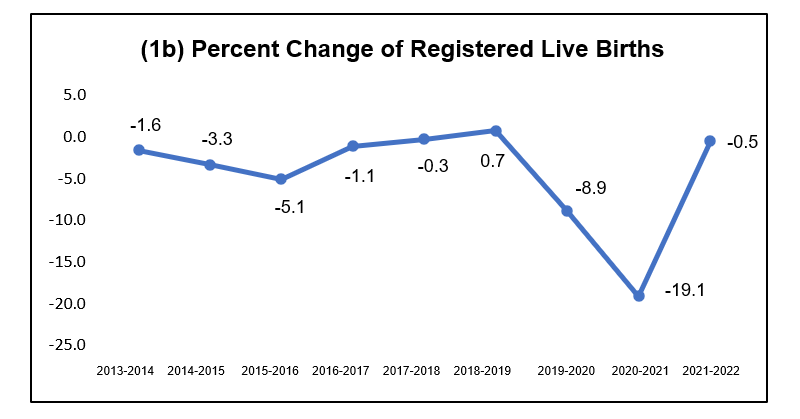
_______________
1Population estimate used was taken from the updated population projections based on the 2015 Census of Population available at www.psa.gov.ph/statistics/census/projected-population.
More male babies were born than females
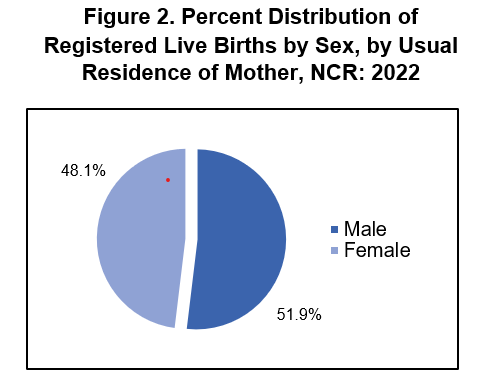
More male babies were born (83,122 or 51.9% share) than female babies (77,010 or 48.1% share) to mothers with a usual residence in NCR, resulting in a sex ratio at birth of 108 males per 100 females. The city of Las Piñas posted the highest sex ratio with 114 males per 100 females. (Figure 2 and Table 2)
More than half of the registered live births occurred in three cities of NCR
The City of Manila registered the highest number of live births with 43,128 (25% share) followed by Quezon City with 38,126 (22.1% share) and the City of Caloocan with 13,861 (11.8% share). The combined registered live births of these three cities comprised 58.9 percent of the total live births in NCR. Meanwhile, the Municipality of Pateros reported the lowest number of live births with 797 (0.5% share). (Figure 3 and Table 2)
Births occurring in NCR exceed births to mothers residing in the region
Registered births that occurred in NCR exceeded births to mothers residing in the region by 12,084. Five cities and the municipality of Pateros reported more birth occurrences than registered births from mothers residing in the respective cities/municipality. The City of Manila posted the largest difference between registered births and births to mothers residing in the city with 19,981 which is 46 percent of the births that occurred there. On the other hand, the City of Caloocan with 13,861 (8.0% share) registered births and 21,373 (13.3% share) births from mothers residing in the city topped among the eleven cities that reported fewer registered births than births from its residents. (Figure 3 and Table 2)
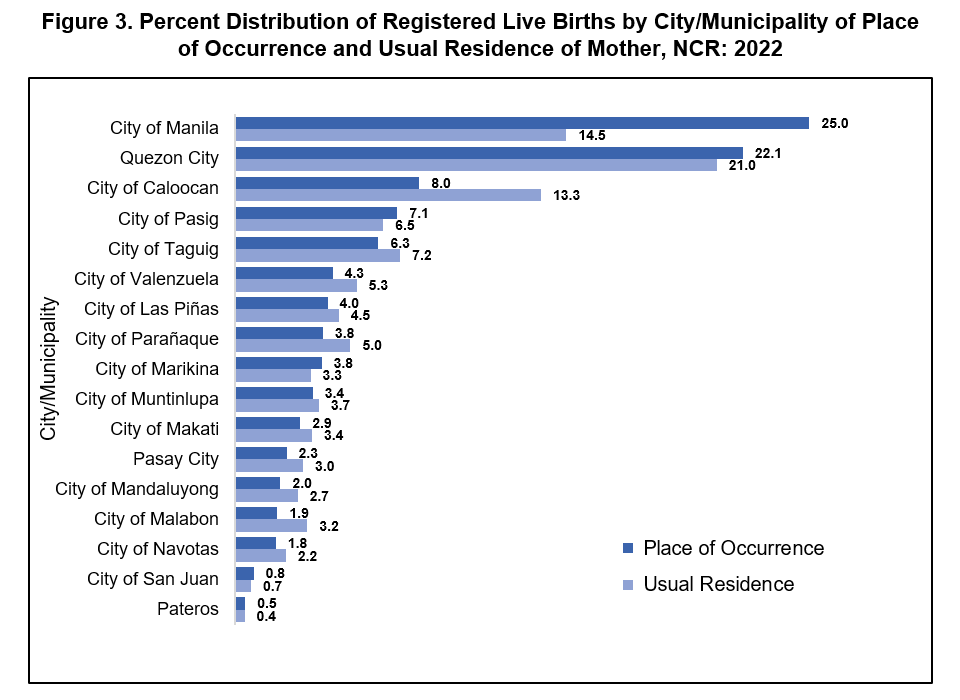
Most number of births registered in October
Most registered births occurred in October with 16,972 (9.9% share) followed by September with 16,896 (9.8% share) and November with 15,632 (9.1% share). On the other hand, the month of February had the lowest number of births with 11,725 (6.8% share). (Figure 4 and Table 3)
In terms of daily average, September recorded the highest with an average of 563 births per day, which translates to 23 births per hour. On the other hand, March had the lowest daily average number of births with 397, equivalent to 17 births per hour.

96 percent of birth deliveries in NCR were medically attended to and delivered in health facilities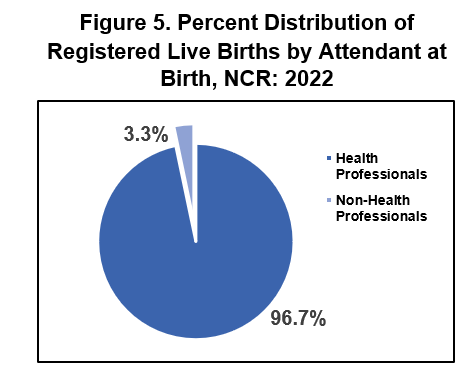
Of the total number of births in NCR, 96.7 percent (166,542)
were attended by health professionals (physicians, midwives, or nurses). Most births were delivered by physicians (78.3% share) followed by midwives (18.2% share). On the other hand, 3.0 percent of births were delivered by traditional birth attendants. (Figure 5 and Table 4a)
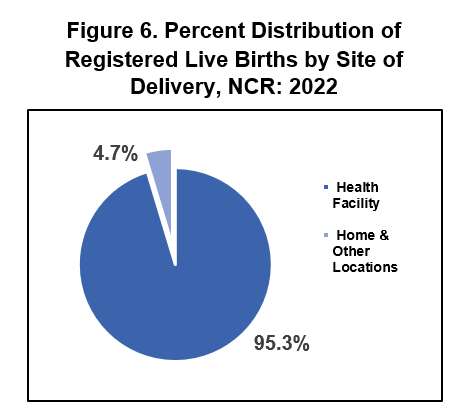
In terms of place of delivery, 95.3 percent (164,183) of births in NCR were delivered in health facilities (either a hospital, birthing clinic, lying-in, outpatient care center, and the like), 4.7 percent (8,033) were delivered at home and other locations. (Figure 6 and Table 4b)
About nine in ten newborn babies weighed more than 2,500 grams
The birth weight serves as a measure of the nutritional status of newborns. The World Health Organization defines low birth weight as a weight less than 2,500 grams (5.5 lbs) at birth. Of the total number of newborn babies, 86.5 percent were above the defined low birth weight. (Figure 7 and Table 5)
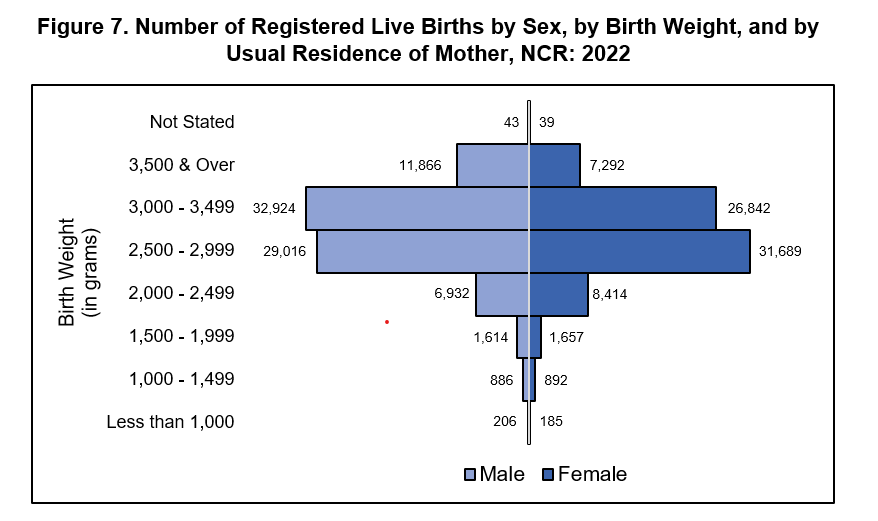
Two in every three babies were born to unwed mothers
Of the total 160,132 registered live births to mothers residing in the region, 111,823, or 69.8 percent were born out of wedlock. This translates to two in every three babies born to unwed mothers residing in NCR. Among sixteen cities and a municipality in NCR, the City of Navotas has the highest percentage of babies born to unwed mothers with 78.0 percent. (Figure 8 and Table 6)
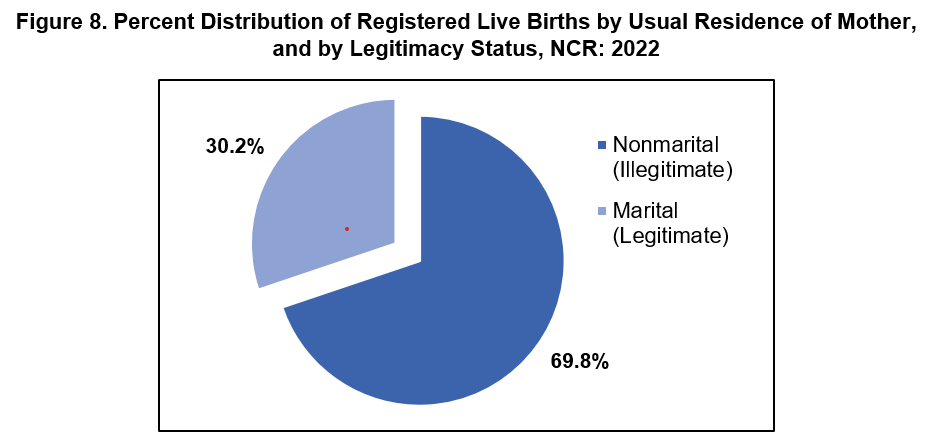
Around 70 percent of births are nonmarital (illegitimate)
Of the total registered live births, 69.8 percent (111,823) are conceived and born out of a valid marriage. Mothers aged 25-29 years had the highest number of nonmarital babies, contributing 33,124 (71.4%) of the total nonmarital births that year. (Table 7)
By age group of mothers, the highest proportion of nonmarital births was to adolescent mothers aged under 15. Of the total number of babies born to adolescent mothers aged under 15, 98.8 percent (321) were nonmarital. This was followed by births to adolescent mothers aged 15-19 years with 98.1 percent (11,978). On the other hand, the lowest proportion of nonmarital babies (40.1%) were mothers aged 45-49 years old. (Figure 9 and Table 7).
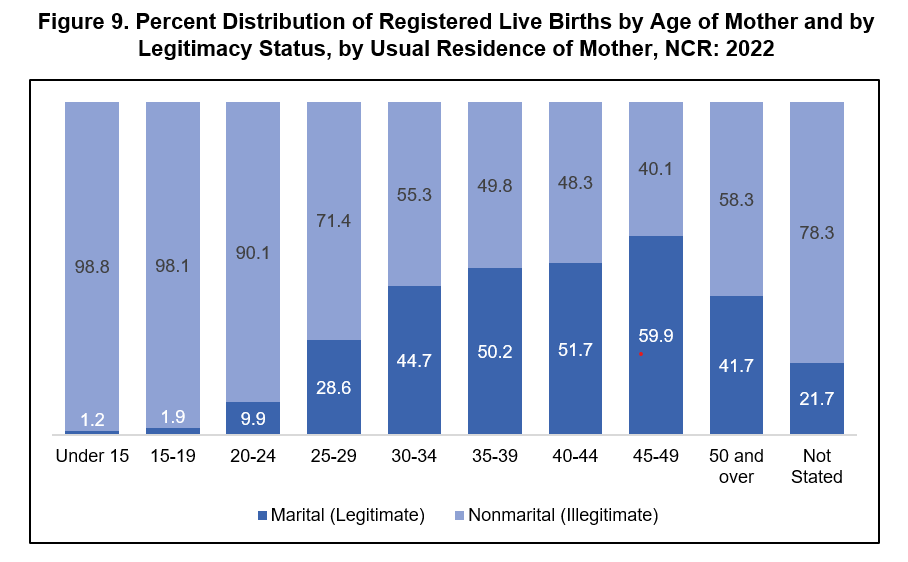
About 94 percent were registered on time
Timely registration refers to the registration of the birth within 30 days of occurrence. In 2022, 94.6 percent of live births to mothers residing in NCR were registered on time while 5.4 percent were registered late. The City of Mandaluyong recorded the highest percentage of timely registration with 98.5 percent while the City of Parañaque recorded the lowest percentage with 87.5 percent.
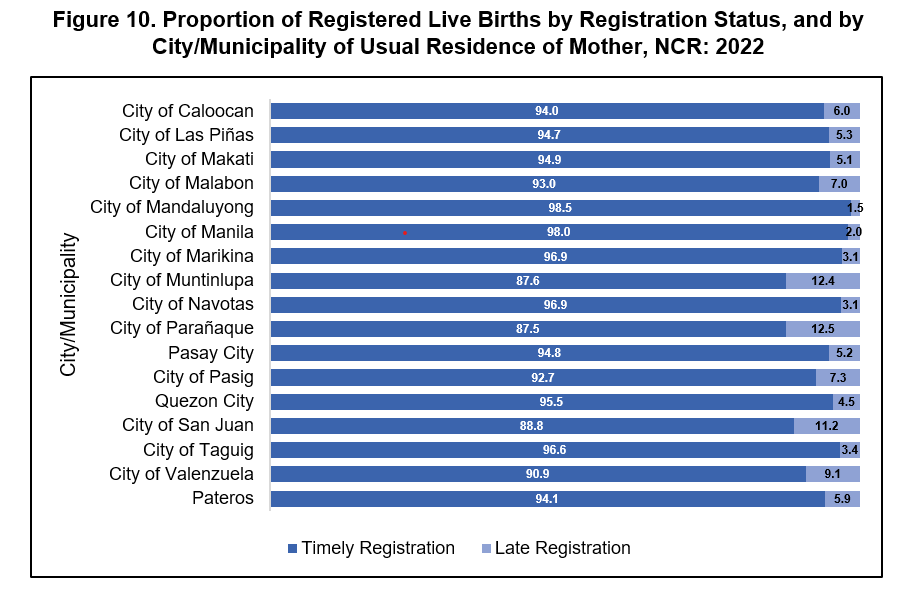
PACIANO B. DIZON
Regional Director
